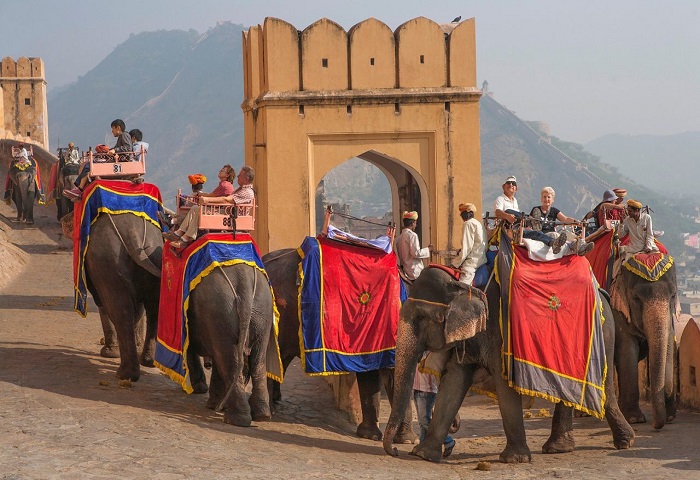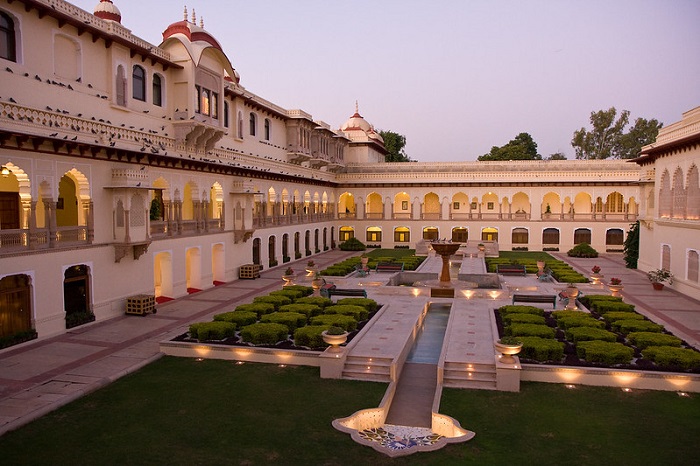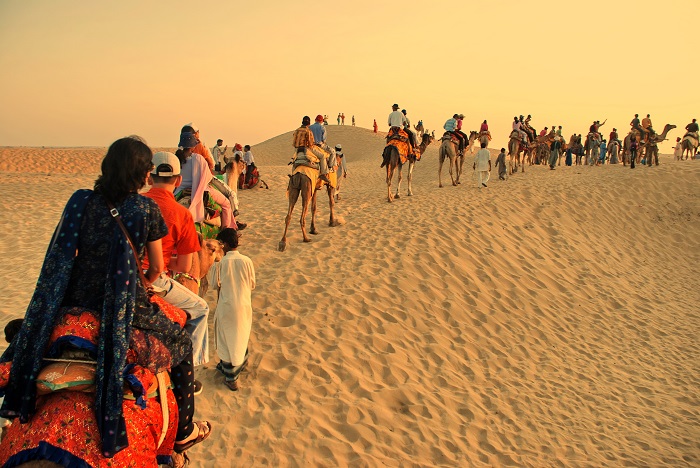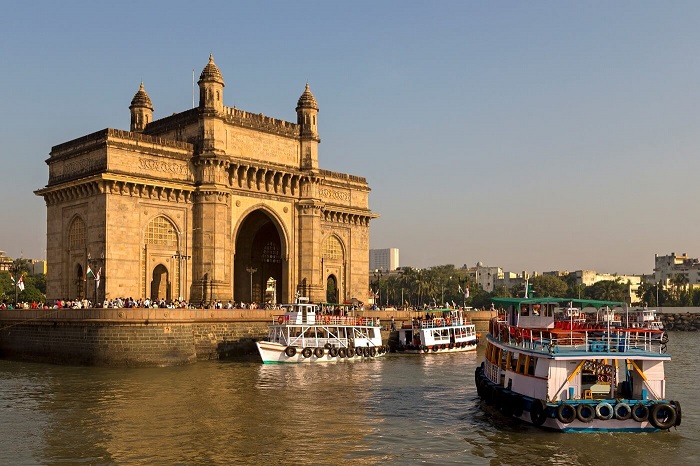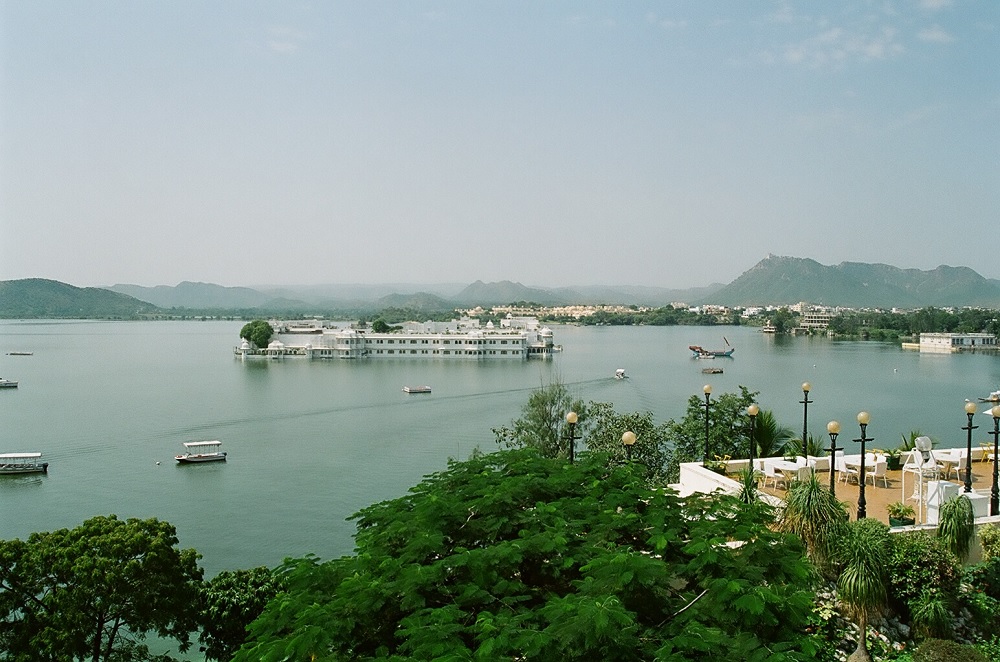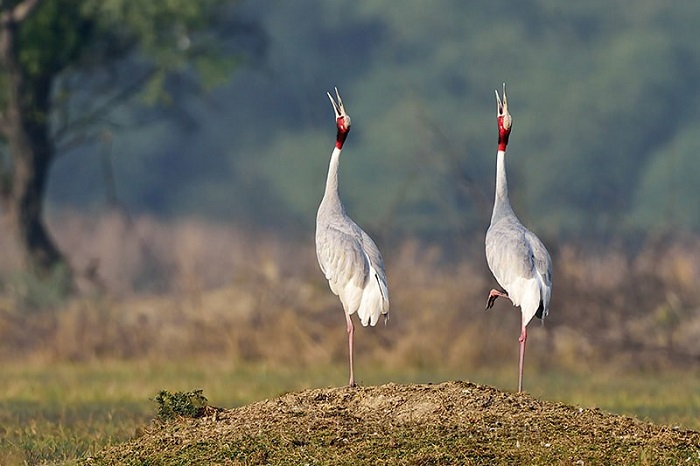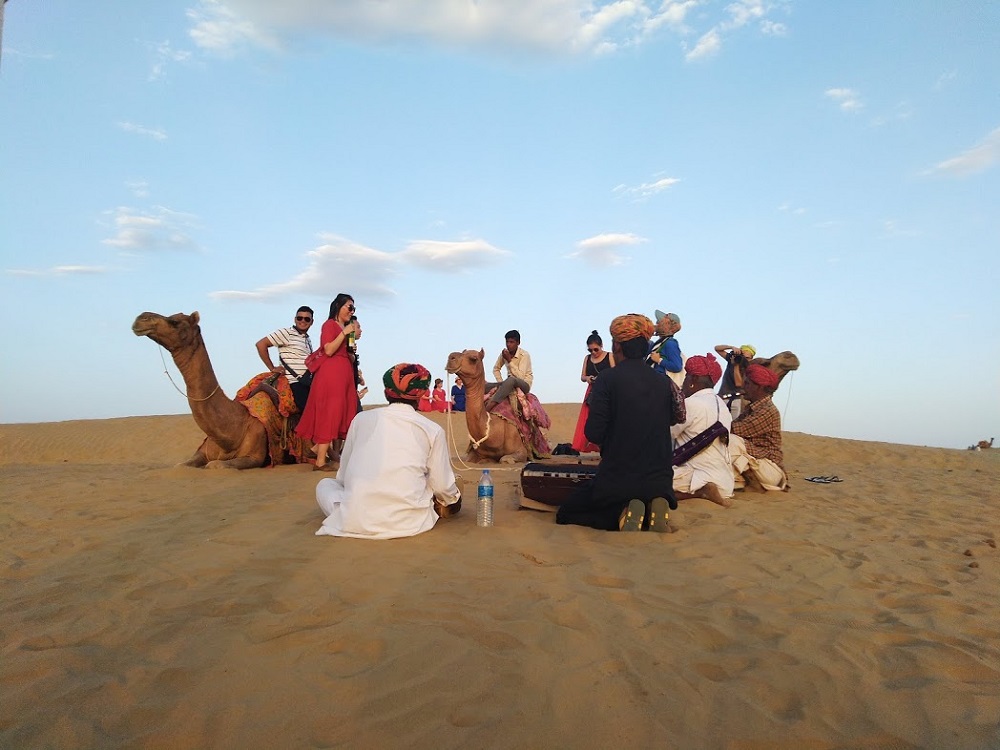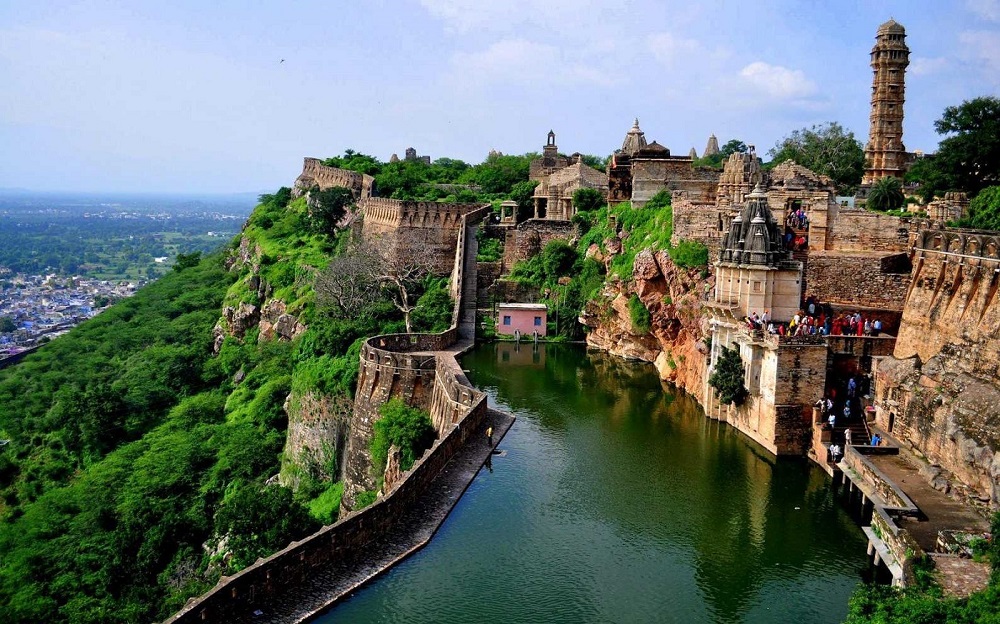Jaisalmer Fort - The Great Golden Fortress in Rajasthan
Jaisalmer, also known as the Golden City has been the epicenter of India’s glorious past. The architecture of the city is dominated by yellow sandstone that imparts a golden yellow hue, hence the name. The fort of Jaisalmer forms the heart of the royal culture and it is one of the very few living forts that still exist today. The crumbling monument sits on top of the Trikuta Hill amid the vast stretches of the golden Thar Desert. The fort greets visitors with visually compelling sights and allows them to immerse in this eminent wonder.
The urban living centre is a chaotic melange and you will be catapulted straight into a world of ethnic charm. Walk through the winding lanes and get awestruck at the sight of splendid Jain temples, houses and local shops that has a peculiar way of making connections. The striking amalgamation of past and present is often reflected on the streets - people walking in traditional attire, children playing in the labyrinth of alleys and women doing their household chores.
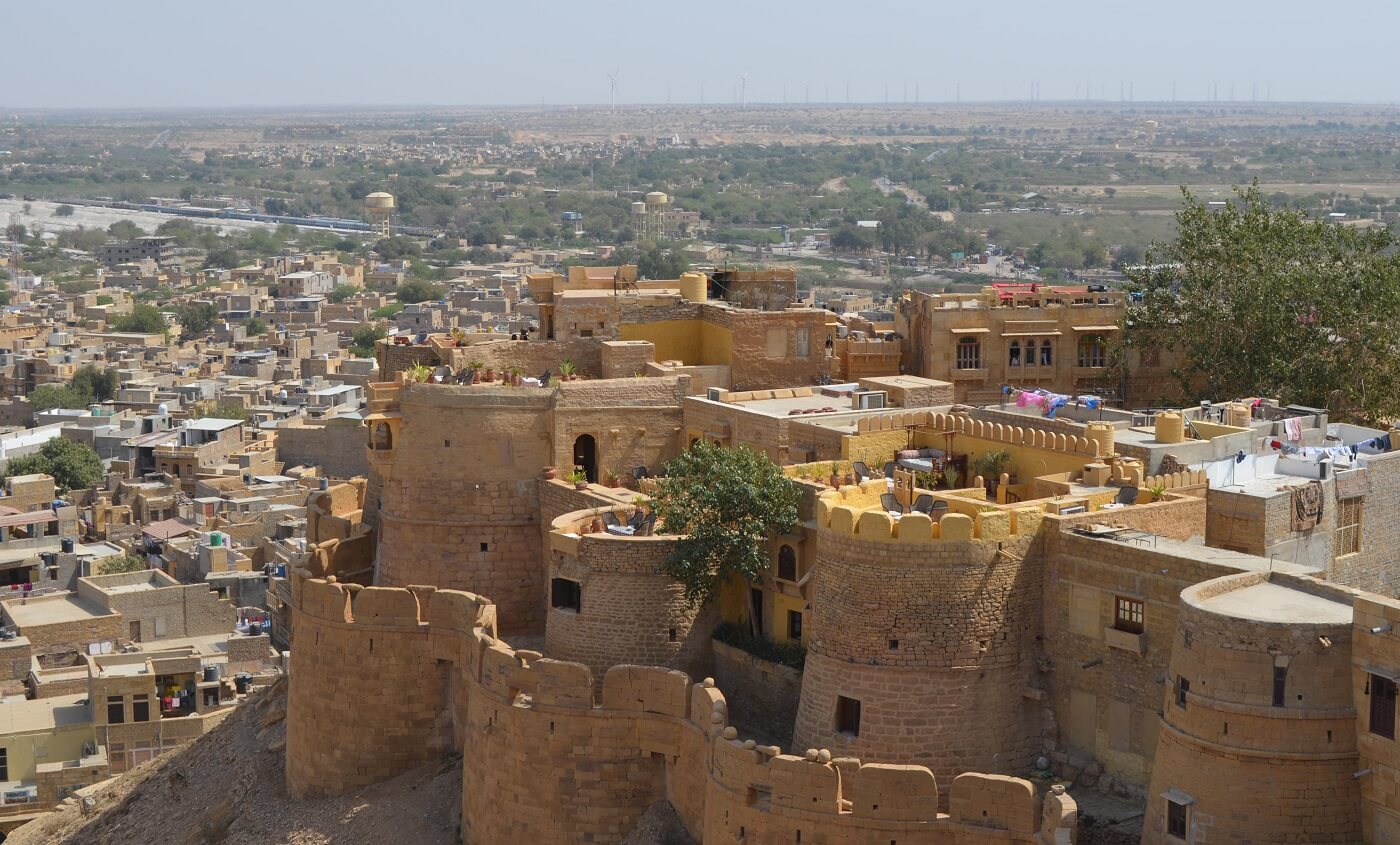
There is no particular time for visiting the fort except the museum which is not open all day. It houses a precious collection of artefacts dating back to centuries. Jaisalmer Fort is one of the six Rajasthan hill forts and also a UNESCO declared Heritage Site.
Also Read : 20 Most Visited Forts and Palaces in Rajasthan
History of Jaisalmer Fort
Jaisalmer Fort was constructed in the year 1156 by the Bhati Rajput King Rawal Jaisal. Around 1294, the Bhati kingdom faced an 8 to 9 years siege attack by Alauddin Khalji (ruler of Khaliji Dynasty). By the end of the battle, The Rajput women committed self-immolation and the warriors died while fighting the Sultan’s forces. After Khalji captured the fort, it remained abandoned for a few years before the Bhatis reoccupied it.
During the rule of Rawal Lunakaran around 1551, the fort was again attacked by Amir Ali (a renowned Afghan chief). When Rawal felt that there is no chance of winning, he slaughtered the women of the kingdom. But eventually reinforcement arrived and he succeeded in defending the fort. Later, Rawal Lunakaran fought the great Mughal King, Humayun who attacked the monument in 1541. Jaisalmer Fort was under the control of the Mughal rulers till 1762 after which Mulraj Maharawal captured it. After his death, the fort was inherited by his grandson in 1820.
With the emergence of the British period in India, the significance of Jaisalmer Fort eventually declined. It is no longer a major trading centre but a popular tourist hub that attracts thousands of visitors throughout the year. Originally, the people of Jaisalmer resided within the fort walls but today the scenario has changed. The fort is the home to around 3000 people who mostly belong to the Rajput and the Brahmin communities.
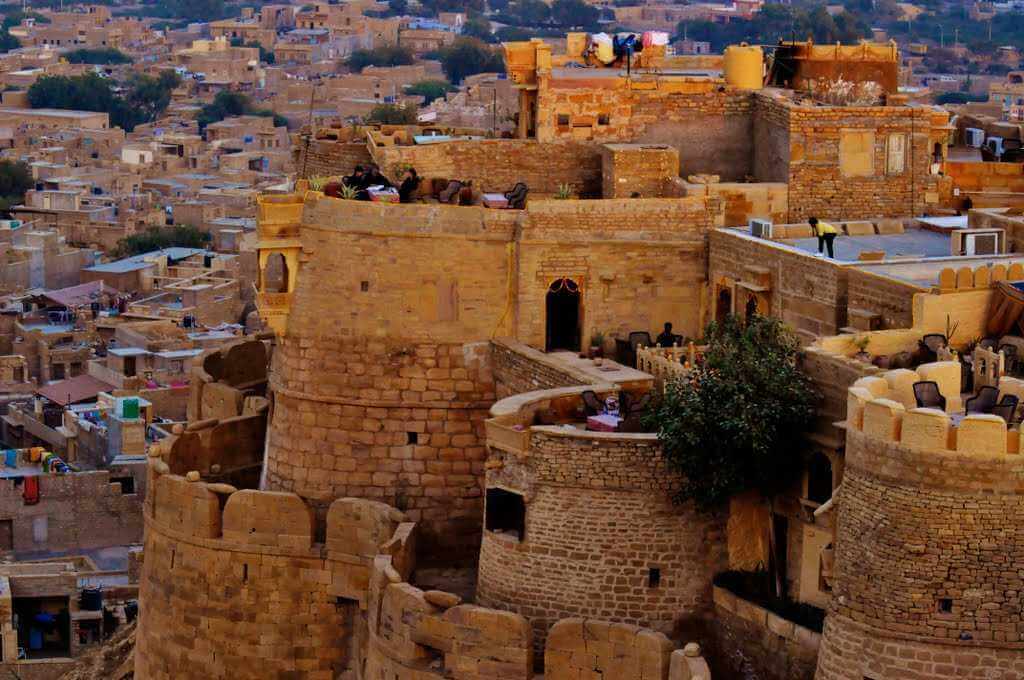
Also Read : Why Visit Rajasthan – The Land of Rajputs
Suggested Tour : 8 Days - Rajasthan Tour from Delhi
Architecture of Jaisalmer Fort
Being one of the six hill forts, Jaisalmer Fort is the epitome of architectural brilliance. The fort symbolizes the strength of the Rajputs in the bygone era. It is entirely carved with grand yellow stones that shimmer during sunset. Hence, the historic landmark is popularly known as the Golden Fort aka ‘Sonar Quila’.
The 250-feet towering fort is the jewel of the Thar Desert. It is enclosed by an imposing wall of 30 feet height and completed with a 60 feet tall main gate made from Indian rosewood. The 5 storey monument is based on typical Rajasthani architectural style with 4 fortified entrances (Ganesha Pole, Hawa Pole, Suraj Pole and Aksya Pole). One of these 4 entrances was guarded by a cannon. There are a total of 99 bastions and 92 of which were rebuilt between 1633 and 1647.
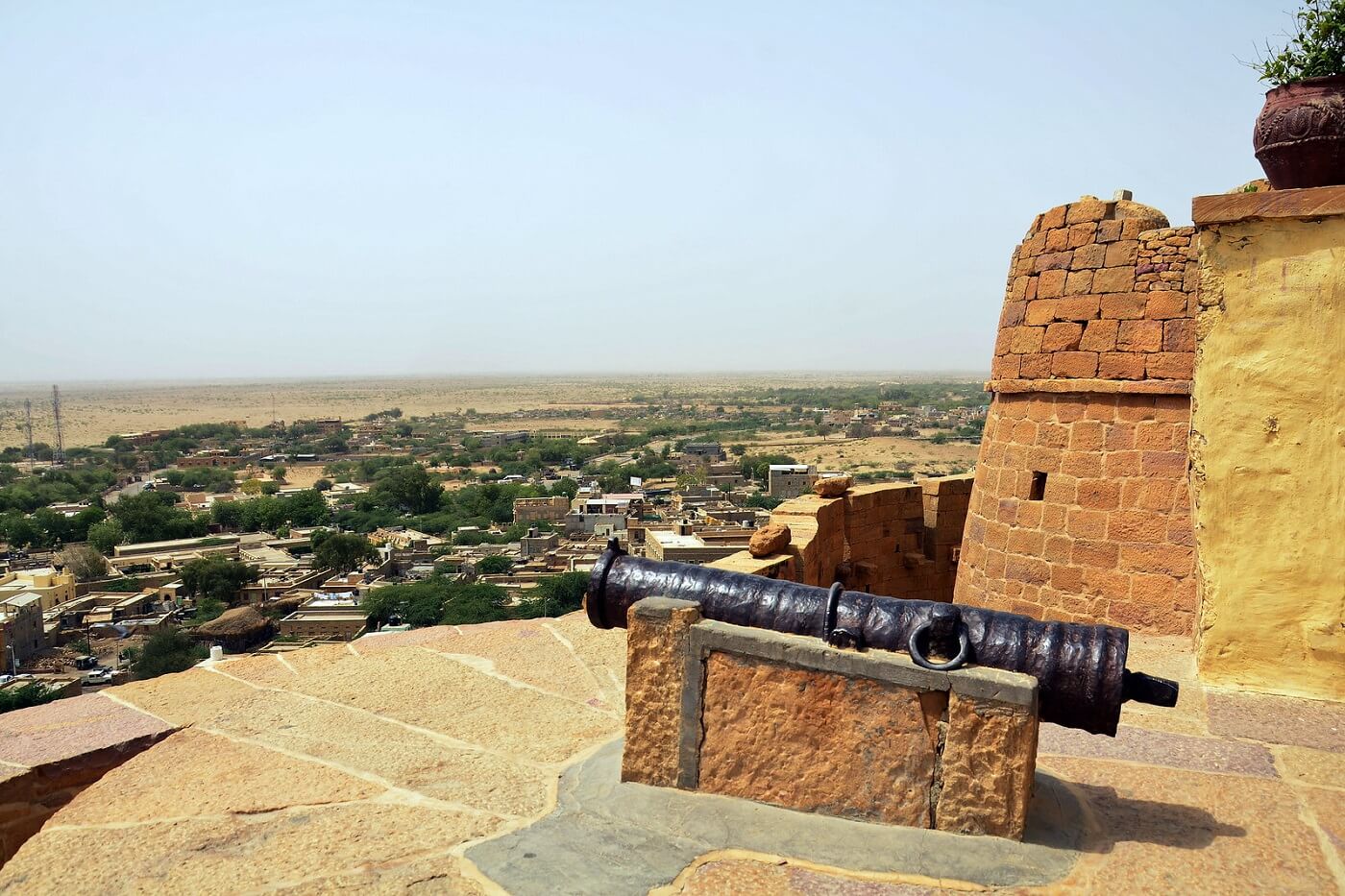
Also Read : Chittorgarh Fort Rajasthan – One of the Largest Forts in India
Inside the fort complex, there are several palaces, temples, restaurants and handicraft shops that are connected with narrow winding paths. However, the crown of this fortification is the grand marble throne of Maharawal that can be reached after climbing a flight of steps. Jaisalmer Fort is beautifully constructed with large windows and balconies that exude aristocratic opulence. Another attraction is the Jawahar Palace which was the home to a royal family in Jaisalmer. The structure features intricate designs and carvings that treat the sore eyes.
Other exquisite palaces include the Gaj Mahal, Rang Mahal, Moti Mahal, Sarvottam Vilas and the Akhai Mahal. With its countless rooms, elaborate havelis, and extravagant architecture, Jaisalmer Fort teleport visitors to the glamorous past that our country is proud off.
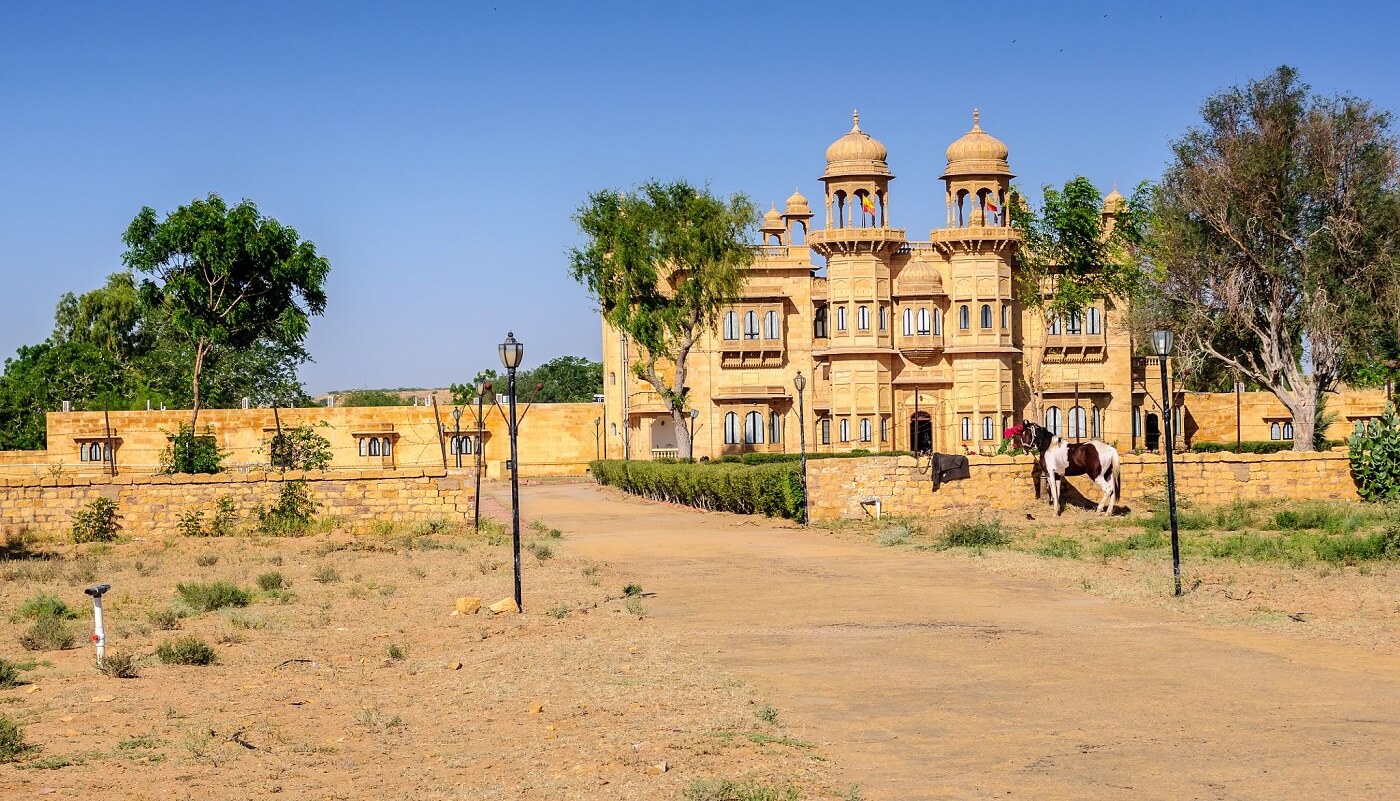
Also Read : Topmost Places To Be Visited In Jaisalmer
Suggested Tour : 14 Days - Rajasthan Agra and Varanasi Tour
Things to see inside Jaisalmer Fort
The enchanting Jaisalmer Fort is not just a monument, it reflects the glorious past of our country. Today, it is a fortified city and numerous people call it their home. Hence there are a lot of things to see and do in this ancient wonder.
1. Gopa Chowk
Set at the foot of the Jaisalmer Fort, Gopa Chowk is the main market square where visitors can enjoy stunning sunset views. It is located right in front of the fort entrance and greets visitors with impressive visuals.
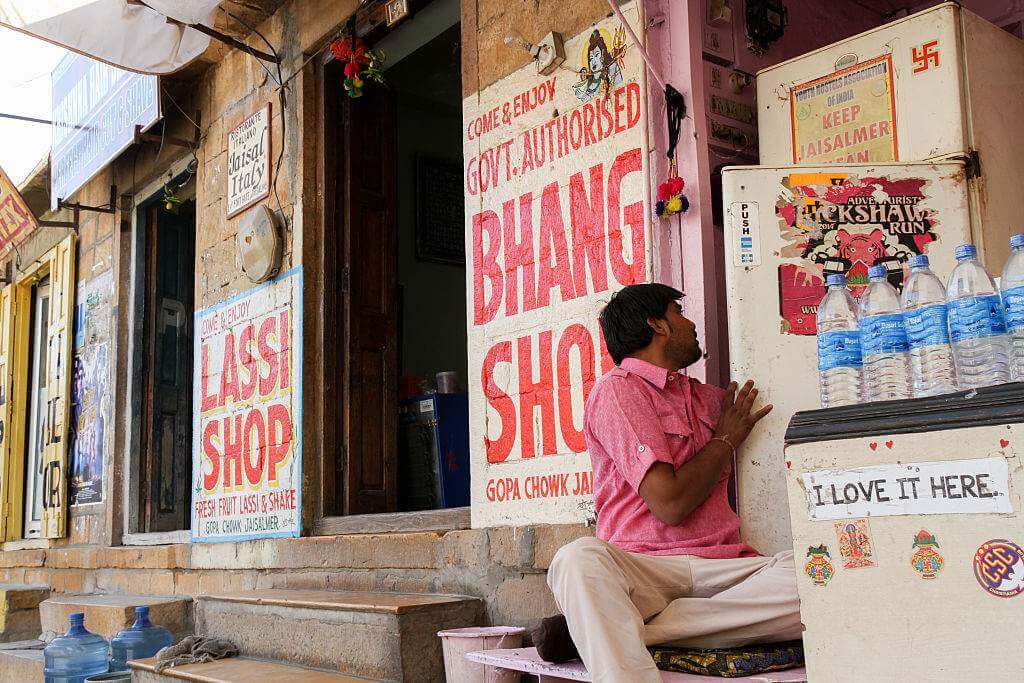
Also Read : Top 10 Colourful Markets in Rajasthan
Suggested Tour : 15 Days - Historical Rajasthan With Agra Tour
2. Dusshera Chowk
Jaisalmer Fort houses a massive courtyard that features a marvellous architecture with fine workmanship. Originally, the courtyard was built for celebrating Dusshera festivities during the patronage of the Rajput Dynasty. The marble throne of the King is the highlight of this Chowk.
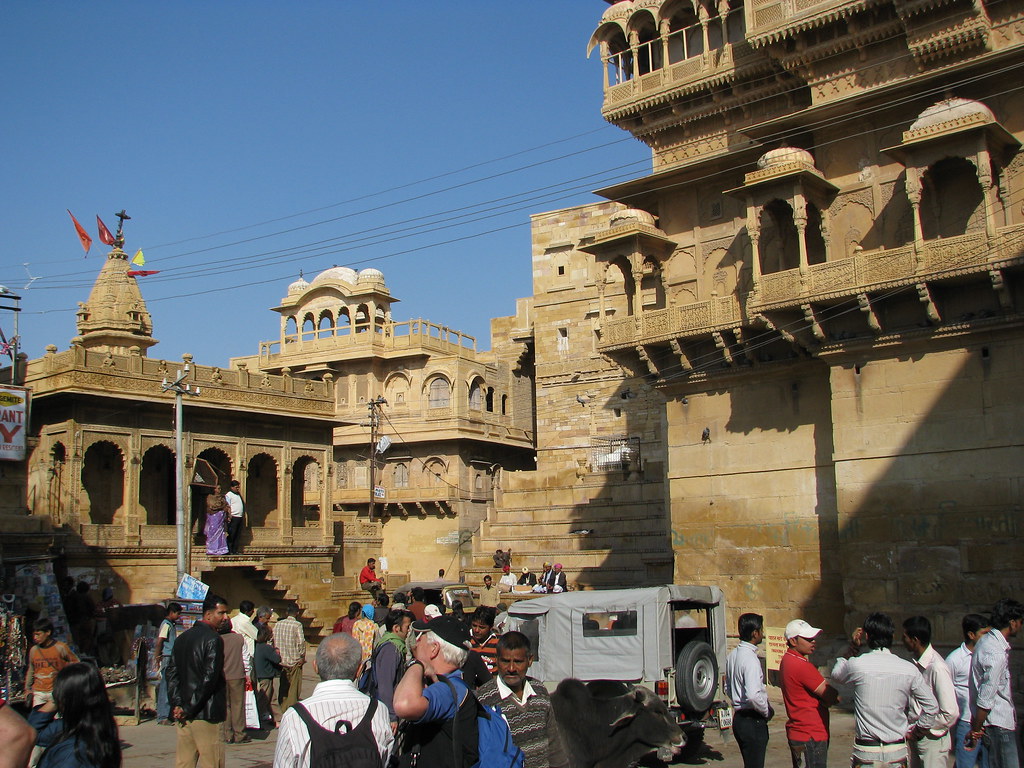
Also Read : Mehrangarh Fort, Jodhpur – An Epitome of Splendour and Majesty
Suggested Tour : 15 Days - Historical Palaces and Havelis Tour
3. Jain Temples
The fort is the home to 7 Jain Temples that depicts sheer magnificence. These temples were constructed between the 13th and 16th century and draw history buffs from every nook and cranny.
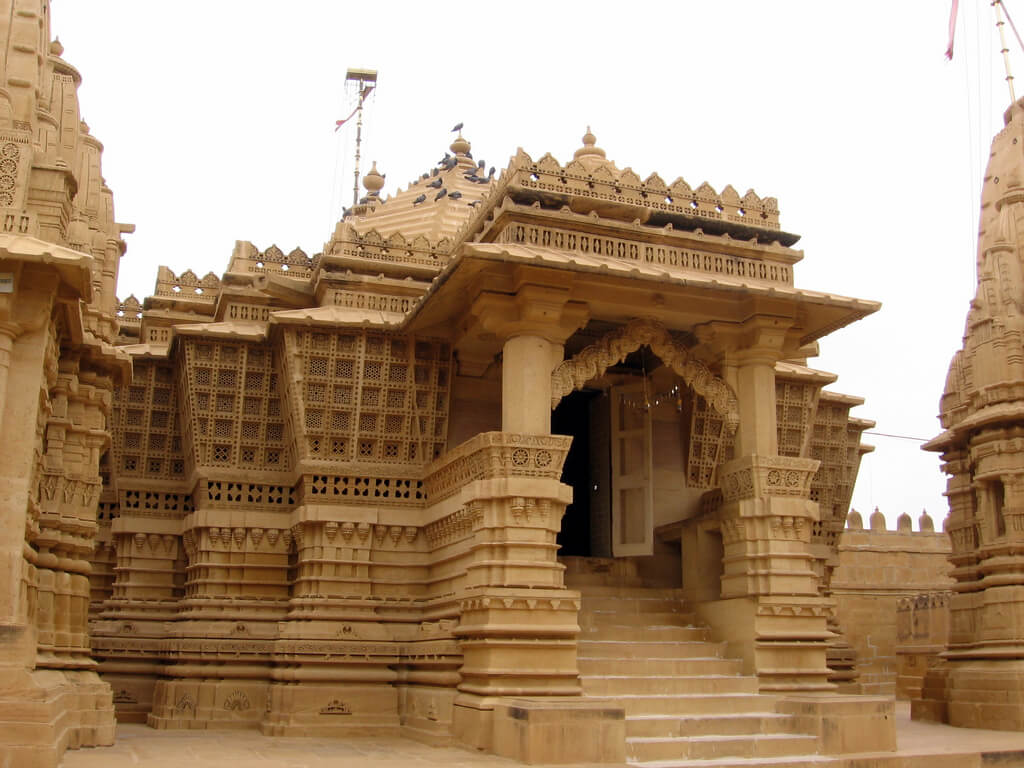
Also Read : 20 Most Famous Jain Temples in India
Suggested Tour : 12 Days - Rajasthan Tour from Jaipur
4. Lakshminath Temple
Located within the fort complex is one of the oldest temples in Jaisalmer, Lakshminath Temple. It was built in the year 1494 and is dedicated to Lord Vishnu and Devi Laxmi. This religious landmark features a simple architecture with ornamented facades that adds to its beauty.
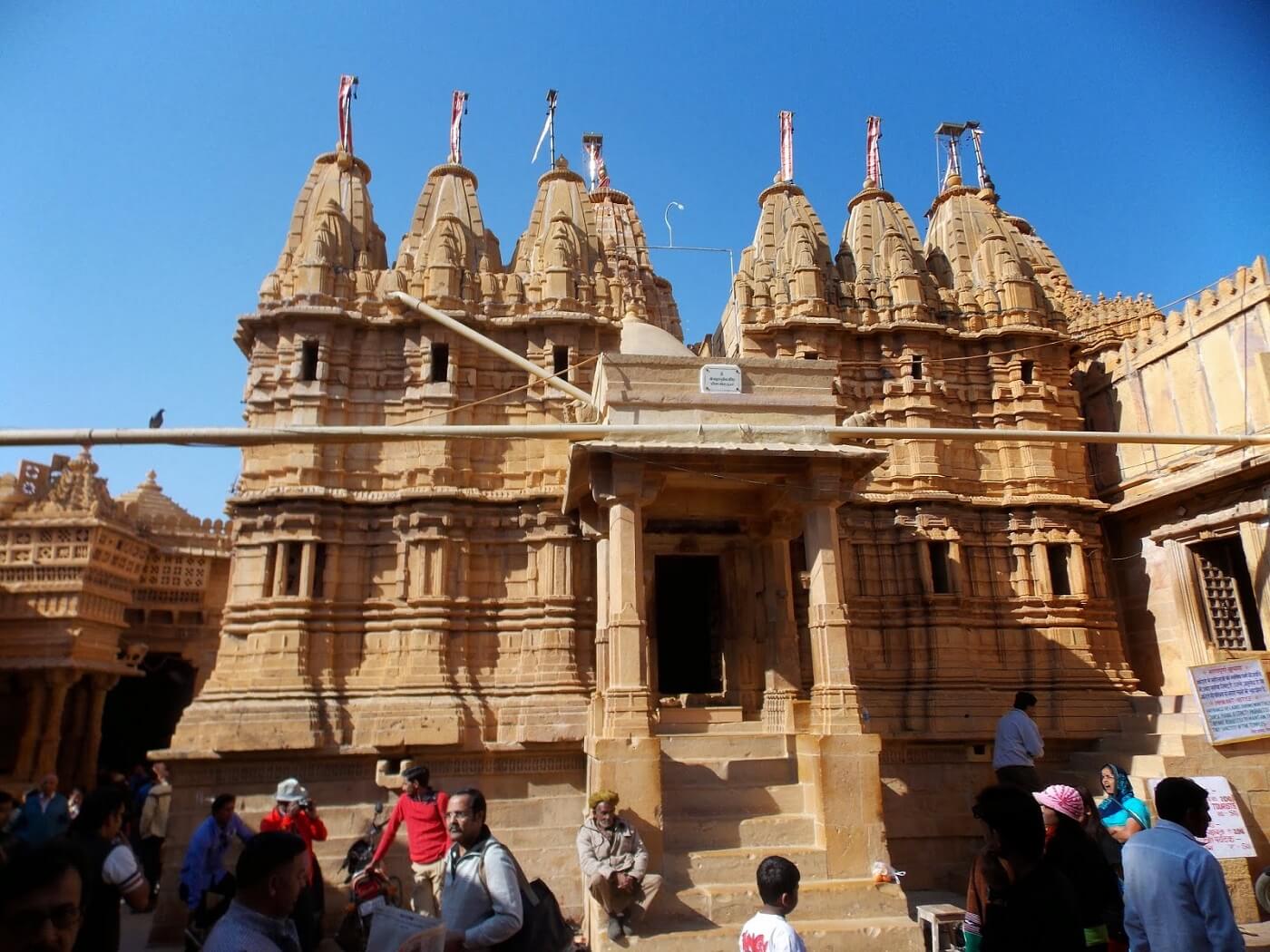
Also Read : Top 10 Temples in Rajasthan you Must Visit
Suggested Tour : 15 Days - Delhi Agra and Rajasthan Tour
5. Merchant Havelis
The palatial merchant houses, commonly known as ‘havelis’ dominates the Jaisalmer Fort complex. These mansions are the finest examples of architectural splendour in the city. Built with yellow sandstone, the houses feature exquisite arches adorned with remarkable carvings.
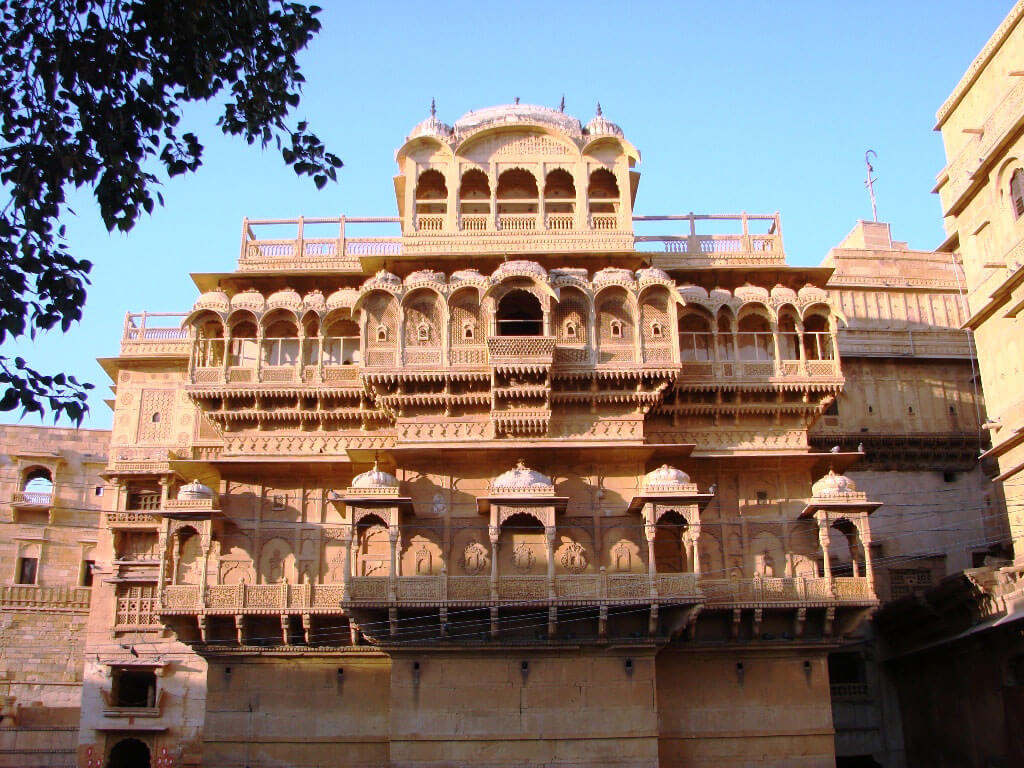
Also Read : Top 10 Historical Places in Rajasthan, India
Suggested Tour : 14 Days - Rajasthan Tour by Car from Delhi
6. Vyas Chhatri
Dating back to the 15th century, Vyas Chhatri is dedicated to sage Vyas, the person who wrote the Hindu epic Mahabharata. It boasts a mesmerizing Rajasthani architecture and offers immense photographic opportunities. It is said, that the mansion is presently occupied by the relatives of the original builders.
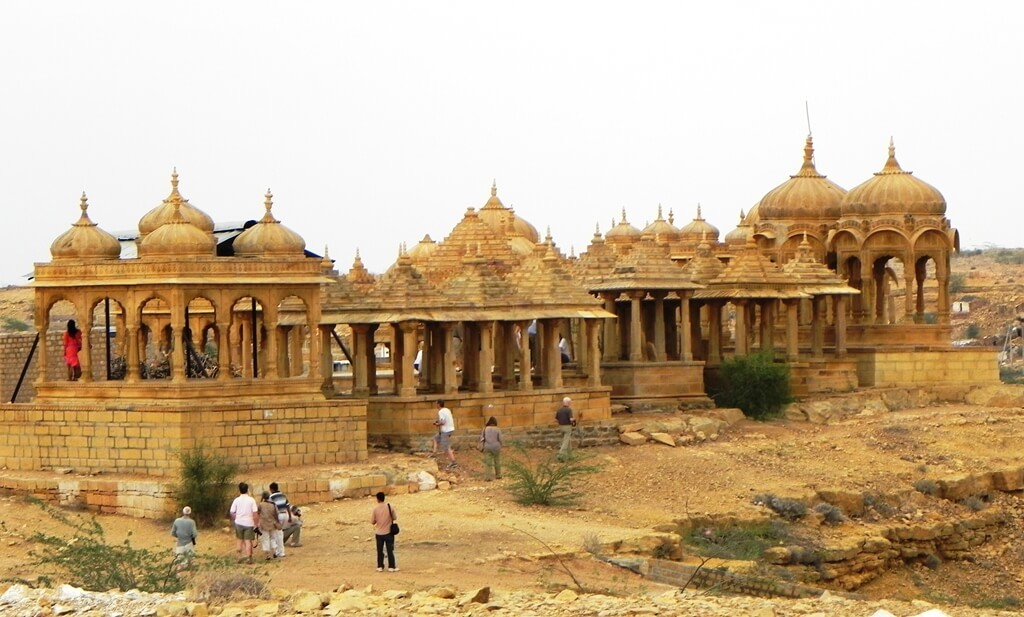
Also Read : Best Places for Photography in Rajasthan
7. Shreenath Palace
Unravel the royal Rajput culture at the Shree Nath Palace. The ancient mansion has been transformed into a heritage hotel and once the Prime Minister of Jaisalmer enjoyed a peaceful stay here.
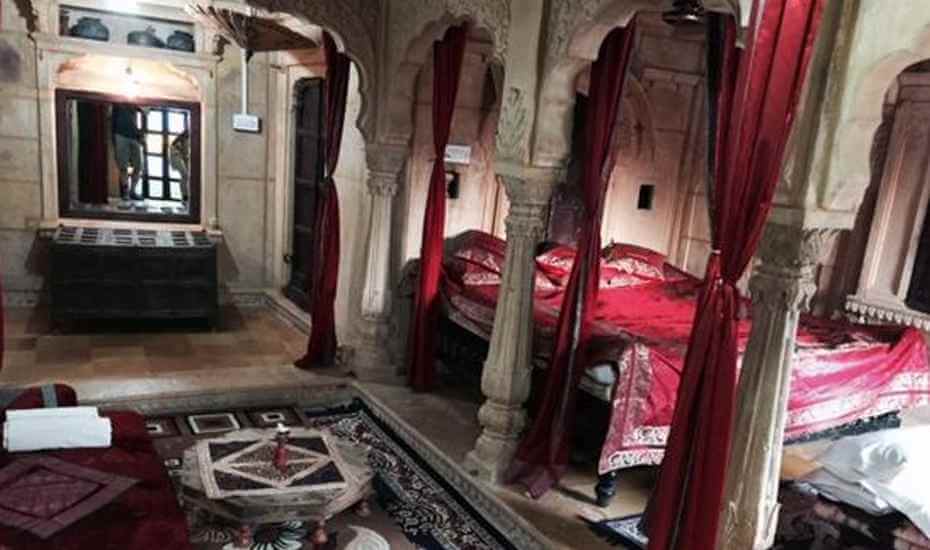
Also Read : Top 15 Heritage Hotels In Rajasthan
8. Raj Mahal
Raj Mahal is the royal residence of the Rajput King Maharawal. This palace is famous for the latticework and exudes an aristocratic opulence. It gives visitors a valuable insight into the ancient era that is lost in time.
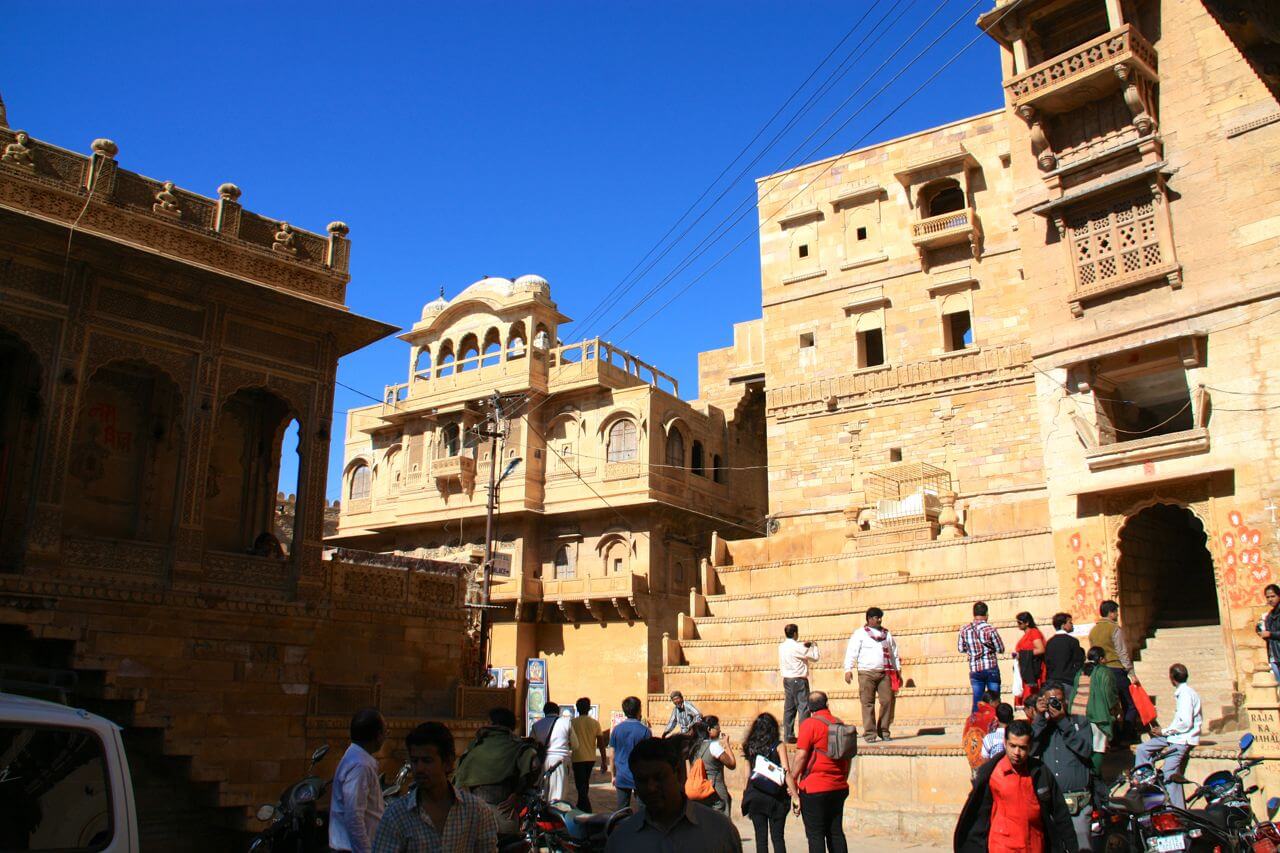
9. Ghut Nali
The Golden Fortress treasures an indigenous drainage system known as ‘Ghut Nali'. This system carefully expels the excessive rainwater from the fort complex.
10. Ashtapad Mandir
The enchanting Ashtapadh Mandir houses more than 600 sculptures and deities dating back to the centuries. It is dedicated to Sambhavanatha and dazzles visitors with its grandeur.
Interesting facts about Jaisalmer Fort
- The Golden Fortress is the largest living desert fort across the globe
- It is a three-layered fortification with the outer layer made from stones
- The site shot to fame after the ionic novelist Satyajit Ray wrote a novel with the fort as the centrepiece, a movie was made later
- It took 9 years for Alauddin Khalji to successfully capture the fort
- A unique drainage system, ‘Ghut Nali’ was designed for proper drainage disposal during that period
Visiting Timing
7:00 AM – 6:00 PM, every day
Entry Fees
INR 50 (Indian Nationals), INR 250 (Foreign Nationals), INR 50 (Camera Photography), INR 100 (Video Camera)
Best Time to Visit Jaisalmer Fort
October to March is the best time to visit this city. It constitutes the winter months when the temperature doesn’t go beyond 20 degrees Celsius. The days are pleasant and the nights are chilly making it perfect for sightseeing and outdoor activities.
Summer begins from April and lasts till June. Due to its close proximity to the Thar Desert, the weather is usually harsh. The temperature often rises up to 44 degrees Celsius and sometimes even more. These are the hottest months of the year and it is not favourable to plan a trip during this time.
July and September constitute the monsoon months. Jaisalmer receives very less rainfall and that makes the weather humid. The average temperature varies between 19 degrees and 31 degrees Celsius. It is not recommended to plan a trip during monsoons.
How to Reach Jaisalmer Fort
As the fort is one of the major tourist spots, cabs and auto rickshaws can be hired from the main city. Jaisalmer is well accessible from other parts of the country with an extensive network of roads and railways.
By Air: The nearest commercial airport is in Jodhpur which is connected to all major cities in India. It takes around 5 hours to reach Jaisalmer and you can hire a prepaid taxi for your onward journey.
By Rail: Jaisalmer is well connected with an extensive rail network that covers the main cities of Delhi, Jaipur and Jodhpur to name a few. Delhi Jaisalmer Express, Howrah Jaisalmer Express, Jodhpur Jaisalmer Express are some of the most popular trains that run daily.
By Road: There are no direct buses to Jaisalmer from Delhi. One has to travel till Jaipur and opt for the bus service.
Tips for visitors
- Carry a water bottle and a pair of sunglass
- As it is a small city within the fort walls, wear comfortable shoes to walk long distances
- Allocate some time and relish the old world charm of the fort
- Try visiting during the winter months when the weather is usually pleasant
- Guides (English and Hindi) are available for an additional fee


